An Individual’s Connection to Nature Can Affect Perceived Restorativeness of Natural Environments. Some Observations about Biophilia
Abstract
1. Introduction
1.1. Perceived Restorativeness from the Evolutionary Perspective
1.2. Why Do Certain Individuals Seem Less Able to Perceive the Restorative Properties of Nature?
1.3. Biophilia Implies Affective Connection to Nature
1.4. Towards a Definition of “Biophilic Quality” of the Environment
1.5. What Is the Role of Familiarity in Perceived Restorativeness?
2. The Aim of this Study
3. Method
3.1. Settings
3.2. Participants
3.3. Constructs and Measures
3.4. Procedure
4. Results
4.1. Statistical Analyses
4.1.1. Multivariate Analysis of Variance
4.1.2. Pearson’s Correlation
4.1.3. Linear Regression Analysis
4.1.4. Kolmogorov-Smirnov Test
4.2. Neural Pattern Recognition
5. Discussion
6. Some Observations about Biophilia
7. Concluding Remarks
Acknowledgments
Author Contributions
Conflicts of Interest
References
- Berto, R.; Barbiero, R. The Biophilic Quality Index: A Tool to Improve a Building from “Green” to Restorative. Vis. Sustain. 2017, 8. [Google Scholar] [CrossRef]
- Berto, R.; Barbiero, G.; Pasini, M.; Unema, P. Biophilic Design Triggers Fascination and Enhances Psychological Restoration in the Urban Environment. J. Biourbanism 2015, 1, 26–35. [Google Scholar] [CrossRef]
- Berto, R.; Barbiero, G. How the Psychological Benefits Associated With Exposure to Nature Can Affect Pro-Environmental Behavior. Ann. Cogn. Sci. 2017, 1, 16–20. [Google Scholar]
- Berto, R.; Pasini, M. Legati Alla Natura da Bambini, per Diventare Adulti Che Hanno Cura Dell’ambiente. Trasporti Cultura, Numero Monografico. Paesaggio Psiche 2017, 46, 60–67. [Google Scholar]
- Kaplan, S. The Restorative Benefits of Nature: Toward an Integrative Framework. J. Environ. Psychol. 1995, 15, 169–182. [Google Scholar] [CrossRef]
- James, W. Psychology: The Briefer Course; Holt: New York, NY, USA, 1892. [Google Scholar]
- Berto, R. Exposure to Restorative Environments Helps Restore Attentional Capacity. J. Environ. Psychol. 2005, 25, 249–259. [Google Scholar] [CrossRef]
- Berto, R.; Baroni, M.R.; Zainaghi, A.; Bettella, S. An Exploratory Study of the Effect of High and Low Fascination Environments on Attentional Fatigue. J. Environ. Psychol. 2010, 30, 494–500. [Google Scholar] [CrossRef]
- Berto, R.; Massaccesi, S.; Pasini, M. Do Eye Movements Measured Across High and Low Fascination Photographs Differ? Addressing Kaplan’s Fascination Hypothesis. J. Environ. Psychol. 2008, 28, 185–191. [Google Scholar] [CrossRef]
- Hartig, T.; Kaiser, F.G.; Bowler, P.A. Psychological Restoration in Nature as a Positive Motivation for Ecological Behavior. Environ. Behav. 2001, 33, 590–607. [Google Scholar] [CrossRef]
- Hartig, T.; Kaiser, F.G.; Strumse, E. Psychological Restoration in Nature as a Source of Motivation for Ecological Behaviour. Environ. Conserv. 2007, 34, 291–299. [Google Scholar] [CrossRef]
- Purcell, T.; Peron, E.; Berto, R. Why do Preferences Differ between Scene Types? Environ. Behav. 2001, 33, 93–106. [Google Scholar] [CrossRef]
- Nisbet, E.K.; Zelenski, J.M.; Murphy, S.A. Happiness is in Our Nature: Exploring Nature Relatedness as a Contributor to Subjective Well-Being. J. Happiness Stud. 2011, 12, 303–322. [Google Scholar] [CrossRef]
- Millar, M.G.; Millar, K.U. The Effects of Direct and Indirect Experience on Affective and Cognitive Responses and the Attitude–Behavior Relation. J. Exp. Soc. Psychol. 1996, 32, 561–579. [Google Scholar] [CrossRef] [PubMed]
- Bystrom, K.E.; Barfield, W.; Hendrix, C. A Conceptual Model of the Sense of Presence in Virtual Environments. Presence Teleoper. Virtual Environ. 1999, 8, 241–244. [Google Scholar] [CrossRef]
- Mania, K.; Chalmers, A. The Effects of Levels of Immersion on Memory and Presence in Virtual Environments: A reality centered approach. CyberPsychol. Behav. 2001, 4, 247–264. [Google Scholar] [CrossRef] [PubMed]
- Ryan, R.M.; Rigby, C.S.; Przybylski, A. The Motivational Pull of Video Games: A self-determination theory approach. Motiv. Emot. 2006, 30, 347–363. [Google Scholar] [CrossRef]
- Berto, R. The Role of Nature in Coping with Psycho-physiological Stress. A Literature Review of Restorativeness. Behav. Sci. 2014, 4, 394–409. [Google Scholar] [CrossRef] [PubMed]
- Barbiero, G. Revealing Children’s Biophilia. In Science, Society and Sustainability. Education and Empowerment for an Uncertain World; Gray, D., Colucci-Gray, L., Camino, E., Eds.; Routledge: Milton Park, UK, 2009; pp. 181–184. [Google Scholar]
- Kellert, S.R. Kinship to Mastery: Biophilia in Human Evolution and Development; Island Press: Washington, DC, USA, 1997. [Google Scholar]
- Kellert, S.R.; Wilson, E.O. The Biophilia Hypothesis; Island Press: Washington, DC, USA, 1993. [Google Scholar]
- Wilson, E.O. Biophilia; Harvard University Press: Cambridge, MA, USA, 1984. [Google Scholar]
- Wilson, E.O. Biophilia and the Conservation Ethic. In The Biophilia Hypothesis; Kellert, S., Wilson, E.O., Eds.; Island Press: Washington, DC, USA, 1993; pp. 31–41. [Google Scholar]
- Klemetsen, A.; Amundsen, P.A.; Dempson, J.B.; Jonsson, B.; Jonsson, N.; O'Connell, M.F.; Mortensen, E. Atlantic salmon Salmo salar L.; brown trout Salmo trutta L. and Arctic charr Salvelinus alpinus (L.): A review of aspects of their life histories. Ecol. Freshw. Fish 2003, 12, 1–59. [Google Scholar] [CrossRef]
- Orians, G.H.; Heerwagen, J.H. Evolved Responses to Landscapes. In The Adapted Mind: Evolutionary Psychology and the Generation of Culture; Barkow, J.H., Cosmides, L., Tooby, J., Eds.; Oxford University Press: New York, NY, USA, 1992; pp. 555–579. [Google Scholar]
- Barbiero, G. Affective Ecology for Sustainability. Vis. Sustain. 2014, 1, 20–30. [Google Scholar] [CrossRef]
- Colucci Gray, L.; Camino, E.; Barbiero, G.; Gray, D. From Scientific Literacy to Sustainability Literacy. Sci. Educ. 2006, 90, 227–252. [Google Scholar] [CrossRef]
- Barbiero, G.; Berto, R. Introduzione Alla Biofilia. La relazione con la Natura tra Genetica e Psicologia; Carocci: Roma, Italy, 2016; ISBN 978-88-430-8280-3. [Google Scholar]
- Barbiero, G. Biophilia and Gaia. Two Hypotheses for an Affective Ecology. J. Biourbanism. 2011, 1, 11–27. [Google Scholar]
- Ulrich, S. Visual Landscape Preference: A Model and Application. Man-Environ. Syst. 1977, 7, 279–293. [Google Scholar] [CrossRef]
- Schultz, P.W. Inclusion with Nature: Understanding the Psychology of Human-Nature Interactions. In The Psychology of Sustainable Development; Schmuck, P., Schultz, P.W., Eds.; Kluwer: New York, NY, USA, 2002; pp. 61–78. [Google Scholar]
- Schultz, P.W.; Shriver, C.; Tabanico, J.; Khazian, A. Implicit Connection with Nature. J. Environ. Psychol. 2004, 24, 31–42. [Google Scholar] [CrossRef]
- Schultz, P.W.; Tabanico, J. Self, Identity, and the Natural Environment: Exploring Implicit Connections with Nature. J. Appl. Soc. Psychol. 2007, 37, 1219–1247. [Google Scholar] [CrossRef]
- Balling, J.D.; Falk, J.H. Development of Visual Preference for Natural Environments. Environ. Behav. 1982, 14, 5–28. [Google Scholar] [CrossRef]
- Wilson, E.O. The Future of Life; Alfred A. Knopf: New York, NY, USA, 2002. [Google Scholar]
- Kals, E.; Schumacher, D.; Montada, L. Emotional Affinity toward Nature as a Motivational Basis to Protect Nature. Environ. Behav. 1999, 31, 178–202. [Google Scholar] [CrossRef]
- Mayer, F.S.; McPherson Frantz, C.M. The Connectedness to Nature Scale: A Measure of Individuals’ Feeling in Community with Nature. J. Environ. Psychol. 2004, 24, 503–515. [Google Scholar] [CrossRef]
- Schultz, P.W. Empathizing with Nature: The Effects of Perspective Taking on Concern for Environmental Issues. J. Soc. Issues 2000, 56, 391–406. [Google Scholar] [CrossRef]
- Vining, J.; Merrick, M.S.; Price, E.A. The Distinction between Humans and Nature: Human Perceptions of Connectedness to Nature and Elements of the Natural and Unnatural. Res. Hum. Ecol. 2008, 15, 1–11. [Google Scholar]
- Petrich, C.H. Fostering Sustainability through the Reasonable Person Model’s Role in Enhancing Attachment. In Fostering Reasonableness. Supportive Environments for Bringing out our Best; Kaplan, R., Basu, A., Eds.; Maize Books: Ann Arbor, MI, USA, 2015. [Google Scholar]
- Kearney, A.R.; Bradley, G.A.; Petrich, C.H.; Kaplan, R.; Kaplan, S.; Simpson-Colebank, D. Public Perception as Support for Scenic Quality Regulation in a Nationally Treasured Landscape. Landsc. Urban Plan. 2008, 87, 117–128. [Google Scholar] [CrossRef]
- Swihart, M.; Petrich, C.H. Assessing the Aesthetic of Small Hydropower Development. Environ. Prof. 1988, 10, 198–210. [Google Scholar]
- Kaplan, S. Environmental Preference in a Knowledge-Seeking, Knowledge-Using Organism. In The Adapted Mind: Evolutionary Psychology and the Generation of Culture; Barkow, J.H., Cosmides, L., Tooby, J., Eds.; Oxford University Press: New York, NY, USA, 1992; pp. 581–598. [Google Scholar]
- Ruso, B.; Renninger, L.A.; Atzwanger, K. Human Habitat Preferences: A Generative Territory for Evolutionary Aesthetics Research. In Evolutionary Aesthetics; E. Voland, E., Grammer, K., Eds.; Springer: Berlin/Heidelberg, Germany; New York, NY, USA, 2003; pp. 279–294. [Google Scholar] [CrossRef]
- Hernandez, B.; Hidalgo, C.; Berto, R.; Peron, E. The Role of Familiarity on the Restorative Value of a Place: Research on a Spanish Sample. IAPS Bull. Environ. Cogn. Mem. Mimma Peron. 2001, 18, 22–24. [Google Scholar] [CrossRef]
- Berto, R. Assessing the Restorative Value of the Environments: A Study on the Elderly in Comparison with Young Adults and Adolescents. Int. J. Psychol. 2007, 42, 331–341. [Google Scholar] [CrossRef]
- Berto, R.; Pasini, M.; Barbiero, G. How Does Psychological Restoration Work in Children? An Exploratory Study. J. Child Adolesc. Behav. 2015, 3, 1–9. [Google Scholar] [CrossRef]
- Pasini, M.; Berto, R.; Scopelliti, M.; Carrus, G. Measuring the Restorative Value of the Environment: Contribution to the Validation of Italian Version of the Perceived Restorativeness Scale. Boll. Psicol. Appl. 2009, 257, 3–11. [Google Scholar]
- Tang, I.C.; Sullivan, W.C.; Chang, C.Y. Perceptual Evaluation of Natural Landscapes: The Role of the Individual Connection to Nature. Environ. Behav. 2015, 47, 595–617. [Google Scholar] [CrossRef]
- Nisbet, E.K.; Zelenski, J.M.; Murphy, S.A. The Nature Relatedness Scale: Linking Individuals’ Connection with Nature to Environmental Concern and Behavior. Environ. Behav. 2009, 41, 715–740. [Google Scholar] [CrossRef]
- Kaplan, R.; Kaplan, S. The Experience of Nature: A Psychological Perspective; Cambridge University Press: Cambridge, UK, 1989. [Google Scholar]
- Frantz, C.; Mayer, F.S.; Norton, C.; Rock, M. There is No “I” in nature: The Influence of Self-Awareness on Connectedness to Nature. J. Environ. Psychol. 2005, 25, 425–436. [Google Scholar] [CrossRef]
- Clark, R.N.; Stankey, G.H. The Recreation Opportunity Spectrum: A Framewoek for Planning, Managing and Research; General Technical Report; US Department of Agriculture Forest Service: Washington, DC, USA, 1979.
- Maes, J.; Egoh, B.; Willemen, L.; Liquete, C.; Vihervaara, P.; Schägner, J.P.; Grizzetti, B.; Drakou, E.G.; La Notte, A.; Zulian, G.; et al. Mapping ecosystem services for policy support and decision making in the European Union. Ecosyst. Serv. 2012, 1, 31–39. [Google Scholar] [CrossRef]
- Paracchini, M.L.; Zulian, G.; Kopperinen, L.; Maes, J.; Schägner, J.P.; Termansen, M.; Zandersen, M.; Perez-Soba, M.; Scholefield, P.A.; Bidoglio, G.; et al. Mapping cultural ecosystem services: A framework to assess the potential for outdoor recreation across the EU. Ecol. Indic. 2014, 45, 371–385. [Google Scholar] [CrossRef]
- Maes, J.; Liquete, C.; Teller, A.; Erhard, M.; Paracchini, M.L.; Barredo, J.I.; Grizzetti, B.; Cardoso, A.; Somma, F.; Petersen, J.E.; et al. An indicator framework for assessing ecosystem services in support of the EU Biodiversity Strategy to 2020. Ecosyst. Serv. 2016, 17, 14–23. [Google Scholar] [CrossRef]
- Mayer, F.S.; McPherson Frantz, C.M. Why is Nature Beneficial. The Role of Connectedness to Nature. Environ. Behav. 2009, 41, 607–643. [Google Scholar] [CrossRef]
- Pernechele, L. Percezione del Paesaggio. Analisi Sui Fattori che Influenzano la Preferenza e la Restorativeness in Quattro Differenti Aree di Studio. Unpublished. Bachelor’s Thesis, University of Milano, Milan, Italy, 2016. [Google Scholar]
- Pasini, M.; Berto, R.; Brondino, M.; Hall, R.; Ortner, C. How to Measure the Restorative Quality of Environments: The PRS-11. Procedia Soc. Behav. Sci. 2014, 195, 293–297. [Google Scholar] [CrossRef]
- Hartig, T.; Korpela, K.; Evans, G.W.; Gärling, T. A Measure of Restorative Quality in Environments. Scand. Hous. Plan. Res. 1997, 14, 175–194. [Google Scholar] [CrossRef]
- Nasar, J.L. Urban Design Aesthetics the Evaluative Qualities of Building Exteriors. Environ. Behav. 1994, 26, 377–401. [Google Scholar] [CrossRef]
- Haykin, S. Neural Networks: A Comprehensive Foundation, 3rd ed.; Prentice Hall: Upper Saddle River, NJ, USA, 2008. [Google Scholar]
- Bishop, C.M. Pattern Recognition and Machine Learning, 2nd ed.; Springer: New York, NY, USA, 2013. [Google Scholar]
- Heerwagen, J.H.; Orians, G.H. Humans, Habits, and Aesthetics. In The Biophilia Hypothesis; Kellert, S.R., Wilson, E.O., Eds.; Island Press: Washington, DC, USA, 1993; pp. 138–172. [Google Scholar]
- Wilson, E.O. The Social Conquest of Earth; Liveright Publishing Corporation: New York, NY, USA, 2012. [Google Scholar]
- Barbiero, G.; Berto, R.; Callegari, G. Biophilic Design to Address Human’s Need for Nature in Daily Artificial Environments. In Proceedings of the Conference of Italian Society of Ecology “Biodiversity: Concepts, New Tools and Future Challenges”, Milano, Italy, 30 August–2 September 2016; University of Bicocca: Milano, Italy, 2016; p. 159. [Google Scholar]
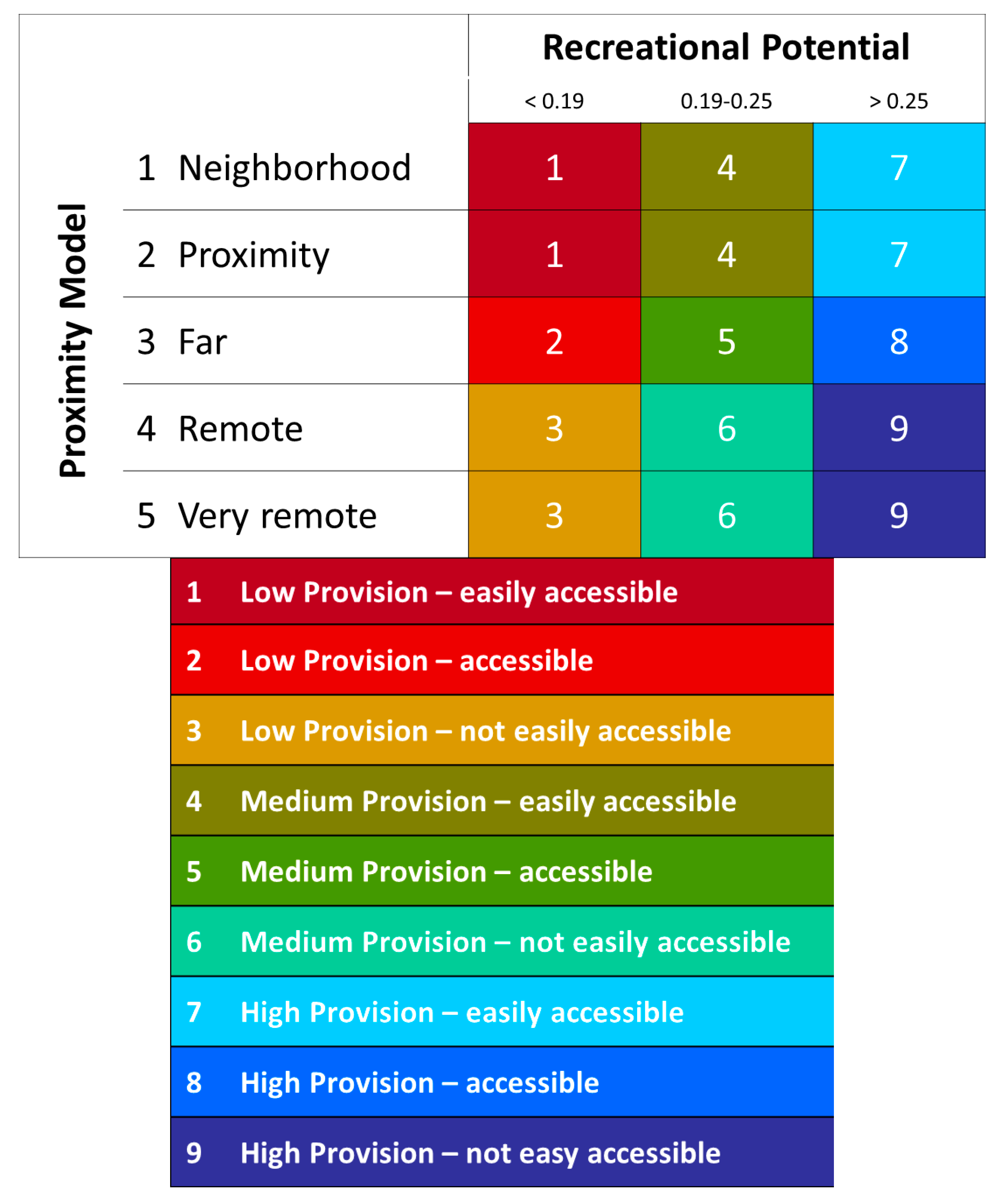
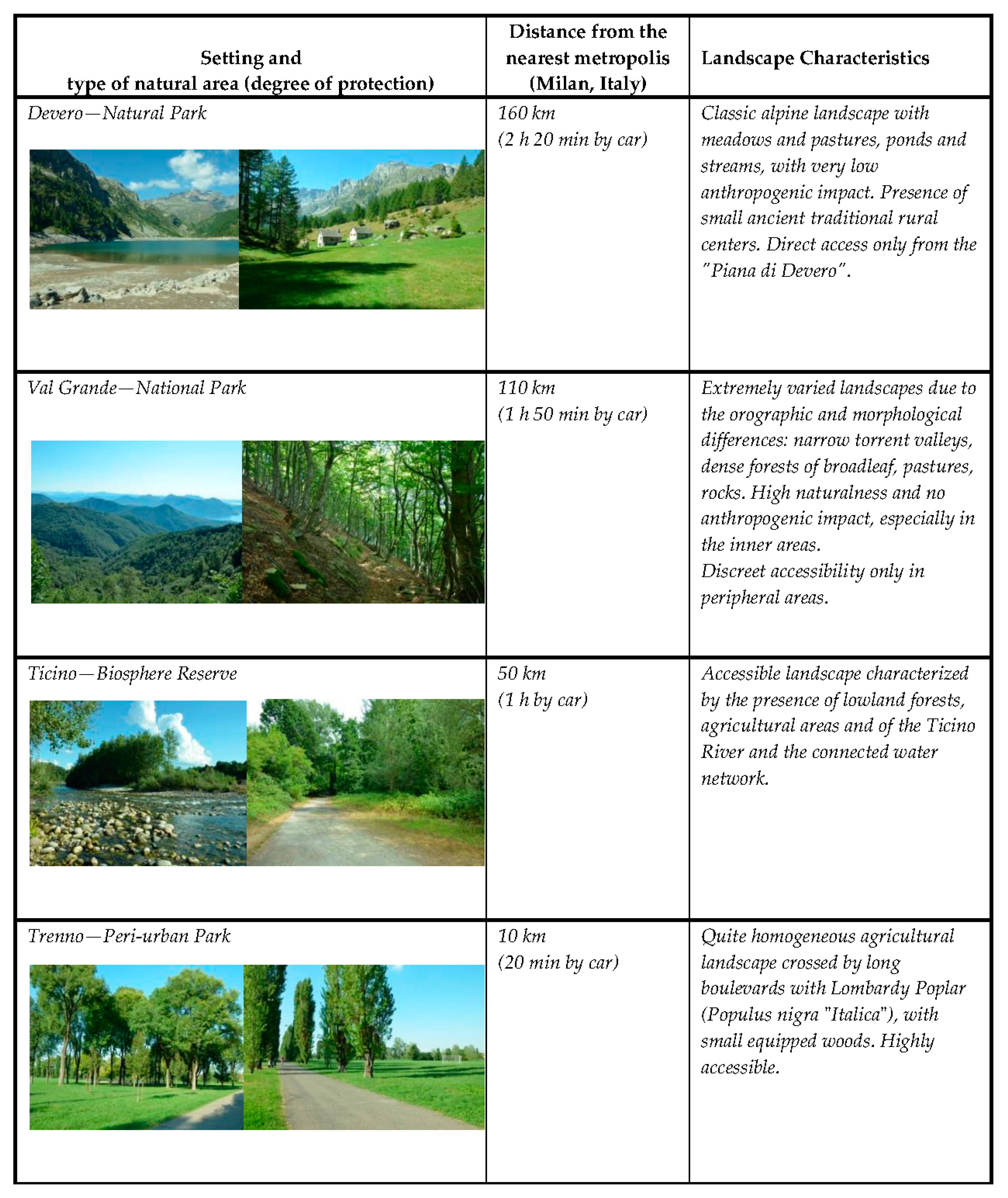
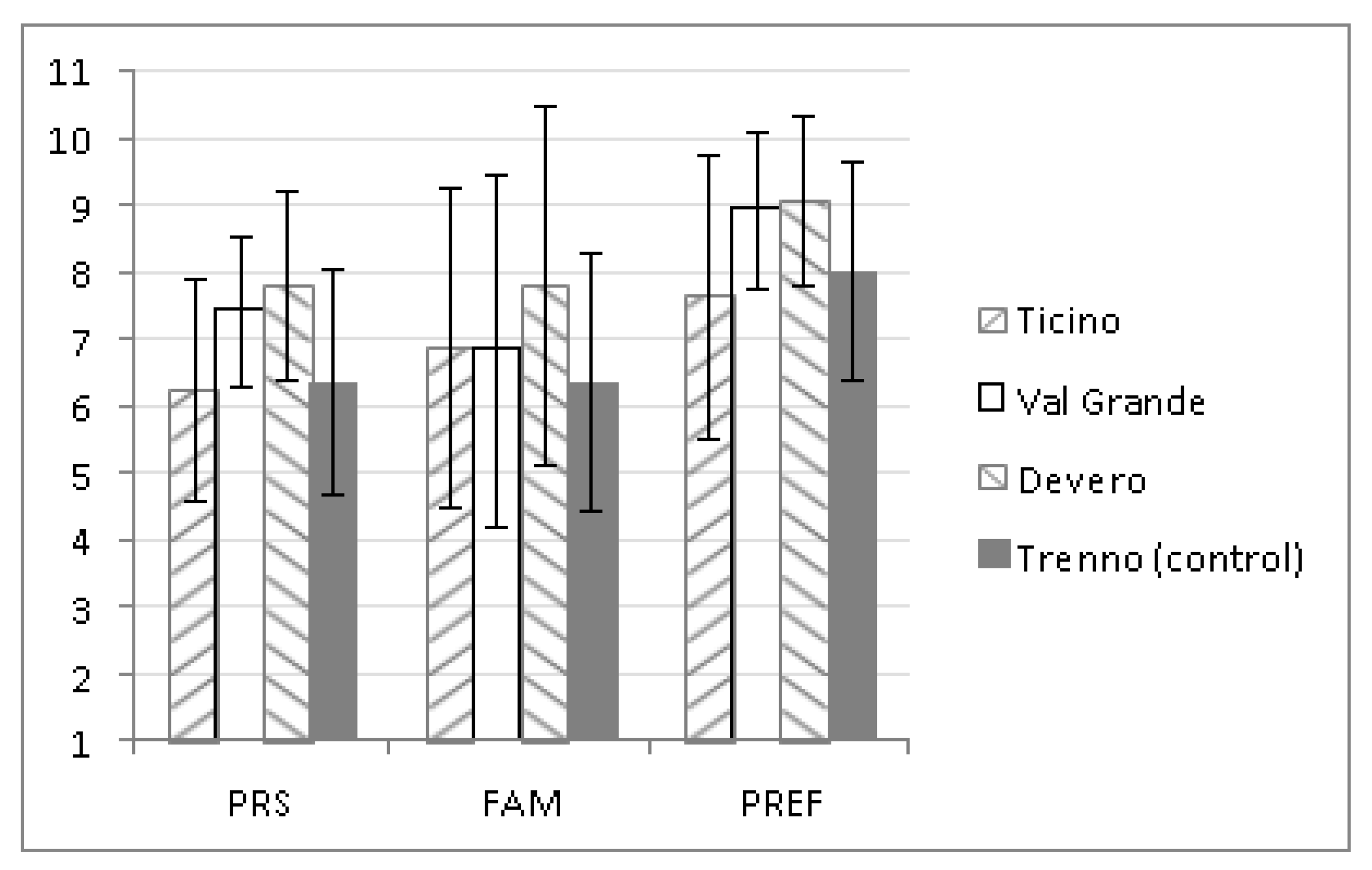
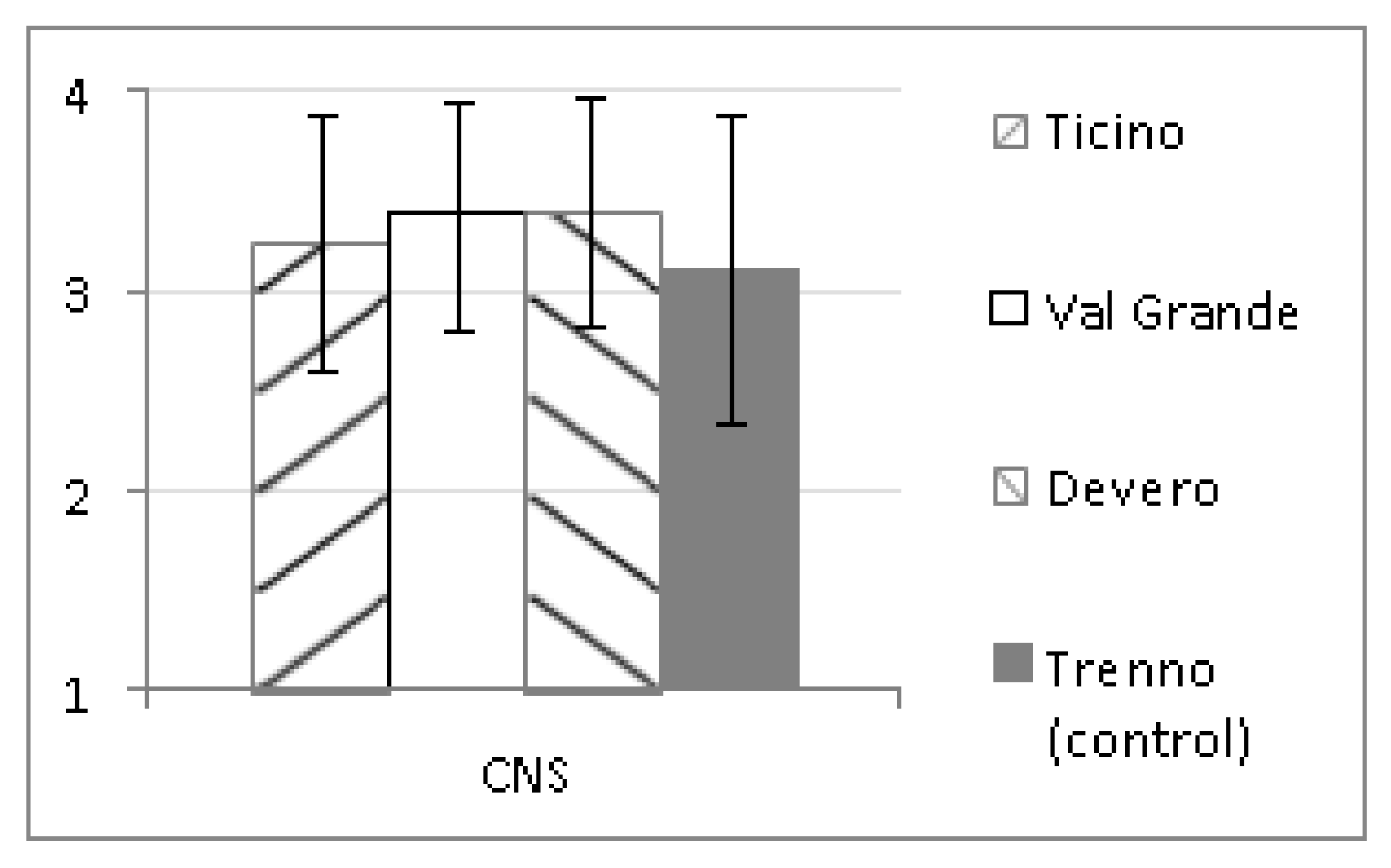
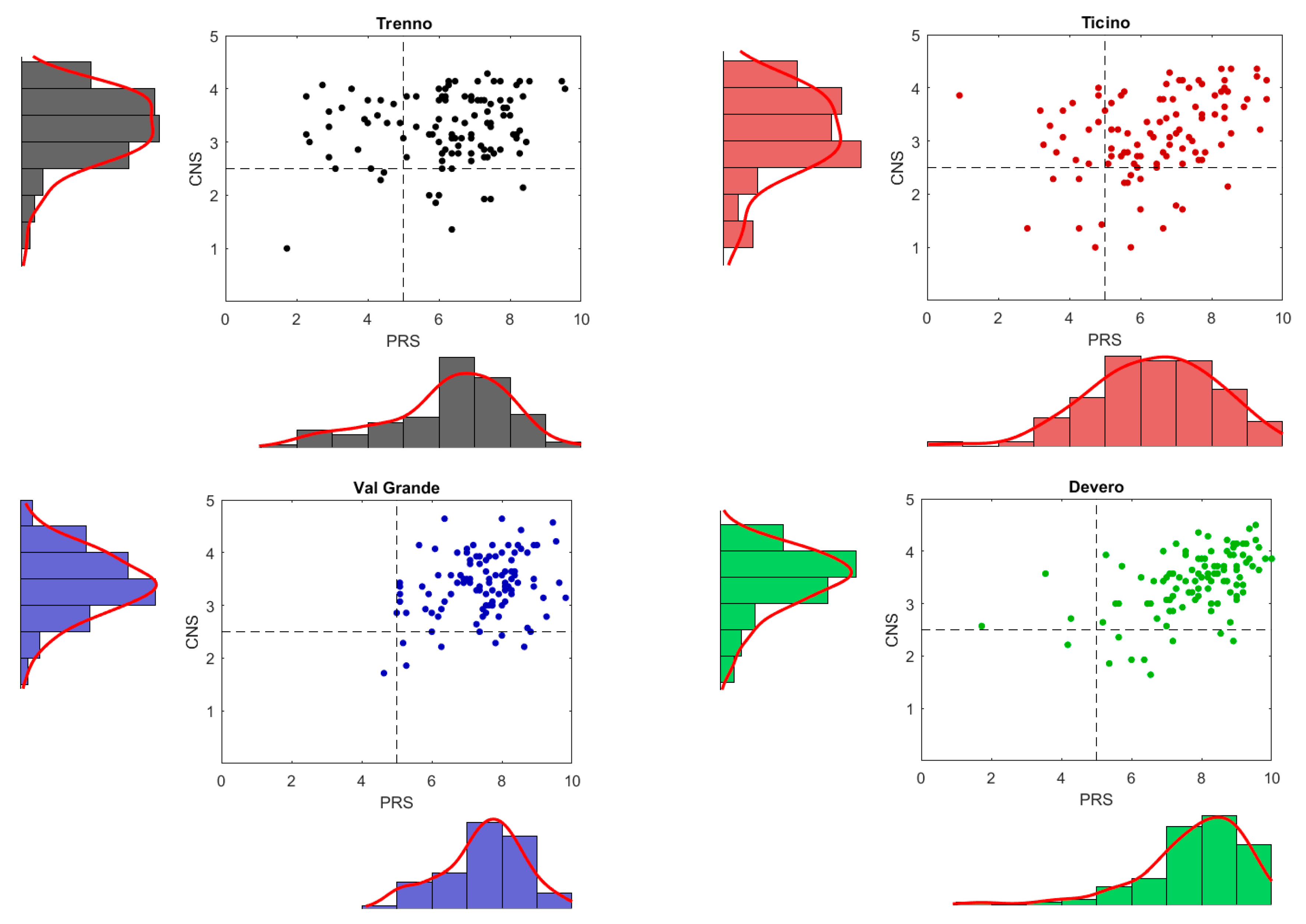
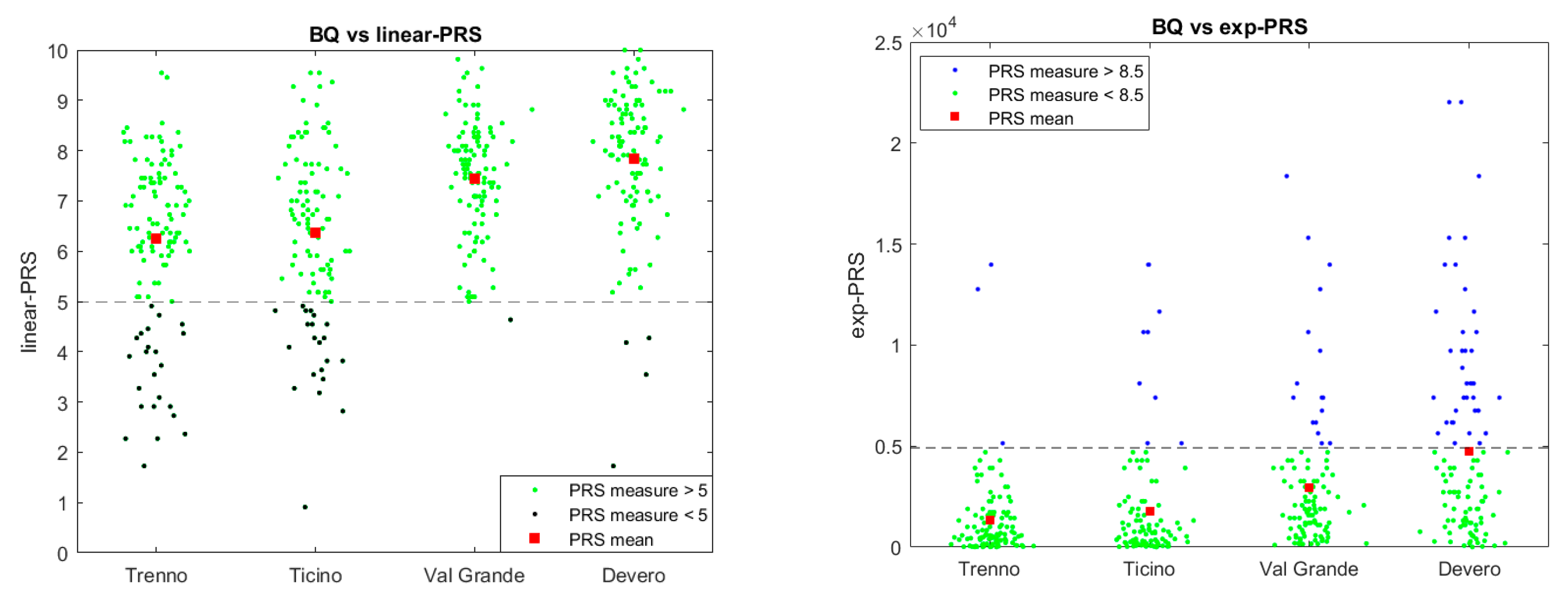
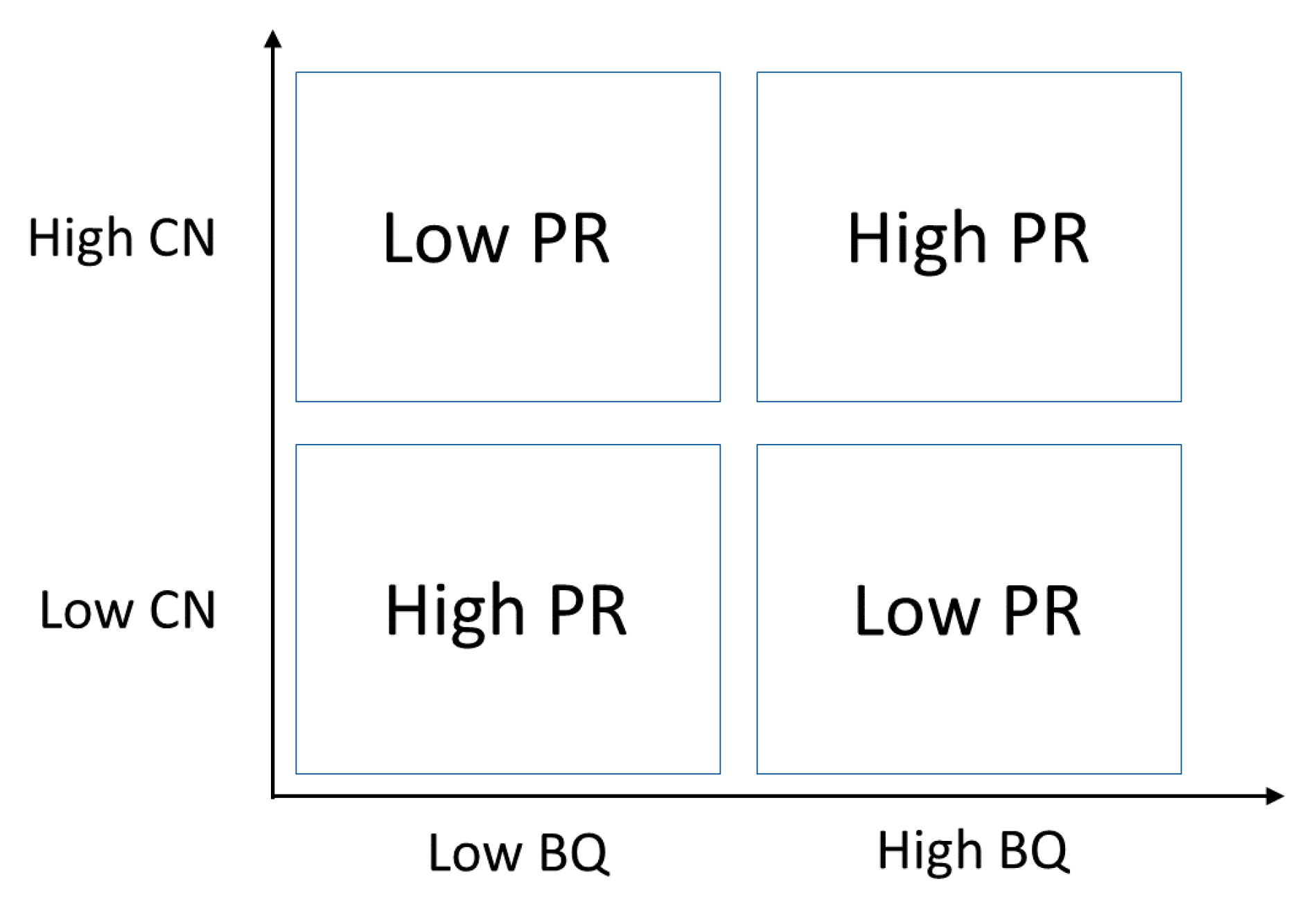
| Proximity Model | Recreational Potential | |||
| Low | Medium | High | ||
| 1 Neighborhood | Trenno | |||
| 2 Proximity | Ticino | |||
| 3 Far | Val Grande | Devero | ||
| 4 Remote | ||||
| 5 Very Remote | ||||
| Total Subjects | Male | Female | Mean Age (SD) | |
|---|---|---|---|---|
| Ticino | 114 | 69 | 45 | 41.26 (16.58) |
| ValGrande | 108 | 55 | 53 | 43.46 (14.73) |
| Devero | 108 | 53 | 55 | 40.73 (14.43) |
| Trenno (control) | 105 | 62 | 43 | 51.60 (19.66) |
| Ticino | ValGrande | Devero | Trenno (Control) | |
|---|---|---|---|---|
| Vegetation * | 3.73 (0.73) | 4.36 (0.69) | 4.24 (0.65) | 3.49 (0.73) |
| Diversity * | 3.18 (0.75) | 3.85 (0.72) | 4.02 (0.79) | 3.05 (0.71) |
| Harmony * | 3.30 (0.76) | 3.90 (0.72) | 4.06 (0.68) | 3.38 (0.68) |
| Openness * | 3.50 (0.84) | 3.64 (1) | 4.26 (0.70) | 4.09 (0.73) |
| Luminosity * | 3.84 (0.77) | 3.62 (0.86) | 4.26 (0.87) | 4.07 (0.83) |
| Representativeness * | 3.28 (0.96) | 3.85 (0.74) | 4.03 (0.79) | 3.05 (1.04) |
| Cleanliness * | 2.31 (0.85) | 4 (0.76) | 4.03 (0.79) | 3.36 (0.86) |
| Maintenance * | 2.59 (0.76) | 3.41(0.86) | 4.01 (0.74) | 3.50 (0.72) |
| Leisure activities * | 3.21 (0.85) | 3.19 (0.91) | 3.68 (0.92) | 3.92 (0.81) |
| Meeting place * | 3.33 (0.84) | 3.19 (0.84) | 3.43 (0.80) | 3.68 (0.93) |
| Novel place * | 2.92 (0.84) | 3.61 (0.86) | 3.57 (0.80) | 2.79 (0.91) |
| Accessible * | 3.30 (0.92) | 3.02 (0.94) | 3.63 (0.90) | 4.10 (0.79) |
| Safety * | 2.85 (0.84) | 3.41 (0.88) | 3.98 (0.72) | 3.32 (0.80) |
| Tranquility * | 3.40 (0.77) | 4.32 (0.72) | 3.91 (0.82) | 3.61 (0.74) |
| Crowding * | 2.84 (0.92) | 2.08 (0.89) | 3.04 (0.98) | 3.07 (0.77) |
| Artificiality * | 1.91 (0.74) | 1.69 (0.91) | 1.91 (0.78) | 2.61 (1.26) |
| All Settings/All Subjects | CNS | PREF | FAM |
|---|---|---|---|
| PRS | 0.34 ** | 0.69 ** | 0.34 ** |
| CNS | 0.20 ** | 0.12 ** | |
| PREF | 0.42 ** |
| CNS | PREF | FAM | ||
|---|---|---|---|---|
| Ticino | PRS | 0.17 | 0.72 ** | 0.39 ** |
| CNS | 0.14 | 0.08 | ||
| PREF | 0.58 ** | |||
| ValGrande | PRS | 0.29 ** | 0.62 ** | 0.23 * |
| CNS | 0.19 * | 0.21 ** | ||
| PREF | 0.29 ** | |||
| Devero | PRS | 0.50 ** | 0.61 ** | 0.53 ** |
| CNS | 0.23 * | 0.24 ** | ||
| PREF | 0.53 ** | |||
| Trenno (control) | PRS | 0.34 ** | 0.57 ** | 0.51 ** |
| CNS | 0.15 | 0.12 | ||
| PREF | 0.53 ** | |||
© 2018 by the authors. Licensee MDPI, Basel, Switzerland. This article is an open access article distributed under the terms and conditions of the Creative Commons Attribution (CC BY) license (http://creativecommons.org/licenses/by/4.0/).
Share and Cite
Berto, R.; Barbiero, G.; Barbiero, P.; Senes, G. An Individual’s Connection to Nature Can Affect Perceived Restorativeness of Natural Environments. Some Observations about Biophilia. Behav. Sci. 2018, 8, 34. https://doi.org/10.3390/bs8030034
Berto R, Barbiero G, Barbiero P, Senes G. An Individual’s Connection to Nature Can Affect Perceived Restorativeness of Natural Environments. Some Observations about Biophilia. Behavioral Sciences. 2018; 8(3):34. https://doi.org/10.3390/bs8030034
Chicago/Turabian StyleBerto, Rita, Giuseppe Barbiero, Pietro Barbiero, and Giulio Senes. 2018. "An Individual’s Connection to Nature Can Affect Perceived Restorativeness of Natural Environments. Some Observations about Biophilia" Behavioral Sciences 8, no. 3: 34. https://doi.org/10.3390/bs8030034
APA StyleBerto, R., Barbiero, G., Barbiero, P., & Senes, G. (2018). An Individual’s Connection to Nature Can Affect Perceived Restorativeness of Natural Environments. Some Observations about Biophilia. Behavioral Sciences, 8(3), 34. https://doi.org/10.3390/bs8030034







